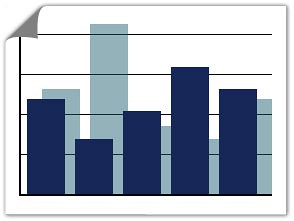 It’s impossible to review a subway system as a tourist. To really gauge mass transit, you really need to be a regular user, but during a recent trip to San Fran, we did come away with some impressions about Bay Area Rapid Transit (BART).
It’s impossible to review a subway system as a tourist. To really gauge mass transit, you really need to be a regular user, but during a recent trip to San Fran, we did come away with some impressions about Bay Area Rapid Transit (BART).BART is slightly older than Metro, having opened in 1971, it handles about half the number or riders as Metro and has just slightly fewer “route miles,” according to Wikipedia.
One of the most striking things about BART was how much it sounds like Metro. If you had a blindfold on, you’d swear you were in Metro.
Probably the biggest difference between BART and Metro is that for a long stretch through central San Fransisco, all four lines of the system run parallel to one another. As long as you're riding along this stretch--we rode from 16th St. Mission to Embarcadero--the wait for a train is never very long. Rush hour is MUCH less stifling than, say, the Red Menace or Orange Crush. The downside to this is that if you're on the western side of the city, you'd have to travel a ways to get to BART.
@cway1979 shared a few thoughts about their experience on BART, thinking it does a better job of integrating with other transit options in the Bay Area. They added that BART is like Metro's uglier, yet smarter stepsister, the one with '80s bangs, but who aced her ACTs.
That said, here are a few casual observations and impressions about BART vs Metro. It is by no means meant to be definitive.
Why BART is better (not in order)
1. Less crowded
2. Easy ticket machines
3. Better lit
4. Hard floors in cars
5. Bigger seats
6. Indoor bike parking
7. Friendlier riders
8. Cool Retro-futuristic voice over PA system
9. Trains stop in the same place every time
Why BART is the same or worse
1. Graduated fares/exit gates requiring fare cards
2. Only one trunk through the city
3. Not as aesthetically pleasing as Metro
4. Not as clean as Metro
5. Less extensive as Metro
Here's another take.
If you've ridden BART, we'd love to hear your comparisons.
Other news:
NextBus relaunching (WaPo)
J7, J9 and W19 fare hike (WMATA)
Thanks to @mktgalchemist for being a great guide!





















 Oct. 11, 2012
Oct. 11, 2012 February 21, 2012
February 21, 2012 March 4, 2010
March 4, 2010





10 comments:
BART's biggest downside is that quad tunnel downtown. It means that it's impossible to get much better than about a 12-minute headway on any individual line. In fact, the blue line is a 15 minute headway all day weekdays, even during rush hour. Not exactly the kind of schedule that lends itself to "just showing up" like here in DC.
Also, much more of the non-rush periods are 20-minute headways off-peak (like most of the day Saturday on the Blue line, e.g.).
Since the distances are longer it feels much more expensive (it's about the same price per mile).
BART 'gets' technology, though. They know that developers want to have data shared widely and without a lot of restrictions. Their website is better, sharing timetable information in plain formatted text as opposed to everything being in PDF.
Other important difference in WMATA vs. BART governance:
BART is supported by a regional sales tax. BART's board of directors is elected rather than appointed.
BART does not operate a bus system.
BART does not operate ADA paratransit service (jurisdictional transit companies operate it on BART's behalf).
These differences improve BART's focus on accountability to their rail ridership.
I lived in the Bay Area for 6 years, and while never a regular BART rider (really intended to get suburbanites into San Francisco, when most of the time I lived in the city proper), I did take it from time to time. It was never especially crowded, but always had kind of a "grungy" feeling to it. It was okay, but lacked the inclusiveness that I think metro has.
BART's biggest plus? It goes right to San Francisco's primary airport: SFO. It's still many, many years before Metro reaches Dulles.
Wanna know what *really* sucks rocks? Muni, San Francisco's municipal transit system which operates it's own, distinct subway from BART (and which you are forced to rely on if you live in the city to GET you to BART). Slow, crowded trains, electric buses on the surface that are always losing their connections to the overhead power lines, and general disdain from residents and tourists alike. If you're in one part of downtown SF and want to head down Market St., it's worth the couple extra cents to hop on BART instead of negotiating the muni system. Arrgghh!
Great comments! Thanks!
I grew up in the Bay Area a BART rider and was amazed--after visits to NYC and riding that subway--how nearly identical the Metro is to BART aesthetically. The fare-gates for instance, are practically dead ringers for each other.
That said, I grew up in the 'burbs and so my experience with BART is driving to a station and riding BART into Oakland, Berkeley or the city. Admittedly, I usually drove to Berkeley. This is because BART goes directly to only a few places of interest. For me, Metro wins this transit battle because of it's multiple access points across the city. Again, though, my riding habits are different on each coast. I know my 'burbian friends in NoVA choose to drive into the city over the hassles of Metro for similar reasons I dislike BART as a 'burbanite.
Also, when I grew up with BART, we had carpeted floors and stained fabric seats. BART does make airport access much easier than Metro, but SFO access is still fairly recent (after years of planning and budget battles... sounds familiar....)
Okay, I could ramble on about this for days and I haven't really made any progress on a victor, so I'll stop.
Having grown up in DC and moved to SF, I can attest to the pros and cons of both. I'd say it's a draw. All depends on who you're riding with.
Here's another plus side to BART (other that the fact that it's in SF, not DC.)... The station names make sense! They call them things like Montgomery St.. 10th St, 16th St., Castro St... not incomprehensive codenames for nowhere like Federal Triangle (or was it Federal Center?) and Smithsonian (hello!? There are like 15 Smithsonians scattered round the city! What's wrng with, say "12th St."?)... Farragut West, Farragut North? No wonder DC tourists seem so lost.
BART does not seem to have as many stops as Metro. In DC i can beat Metro in my car for getting to work almost all the time.
Worst thing about BART? The cow-town hours of operation. Even on weekends the last train out of SF is a little after midnight (I'm older but bit THAT old, jeez how about last train a little after 2am on weekends?). Also holiday hours are ridiculous. I have a flight on Thanksgiving day at 630am. The 1st BART train I can take to SFO isn't until 8am so if I have an early flight (anything before 10am) on a holiday or Sunday, BART won't do.
I am a regular visitor (I live in New York) to DC and therefore a frequent metro rider. I also lived in San Francisco for 15 years. My assessment of the two systems is that I think it depends on the lens you see through. While living in San Francisco, I was always envious of Metro while visiting D.C. and I was reminded of the short-comings of BART. If I had been a person living in the suburbs of the East bay and commuting to the SF Financial District, then BART is a commuters dream. Relatively clean, quiet and fast. Fast because there are very few stops in between my suburban stop and the city. As a resident of San Francisco, the utility of BART was extremely limited. BART has only one line in the city with 8 stops. Except for the 4 downtown stations, these are spaced far apart. In contrast, downtown DC has a network of connecting metro lines providing service to a number of central points of interest. While DC and San Francisco share similar land areas, in total I count nearly 40 station stops in DC vs. the 8 limited use stops in SF. So, again, if I lived in the suburbs going downtown fantastic. This is what it was designed for. However, as a San Francisco city resident the utility was almost nil. With one exception. The relatively new connection to the airport.
Post a Comment